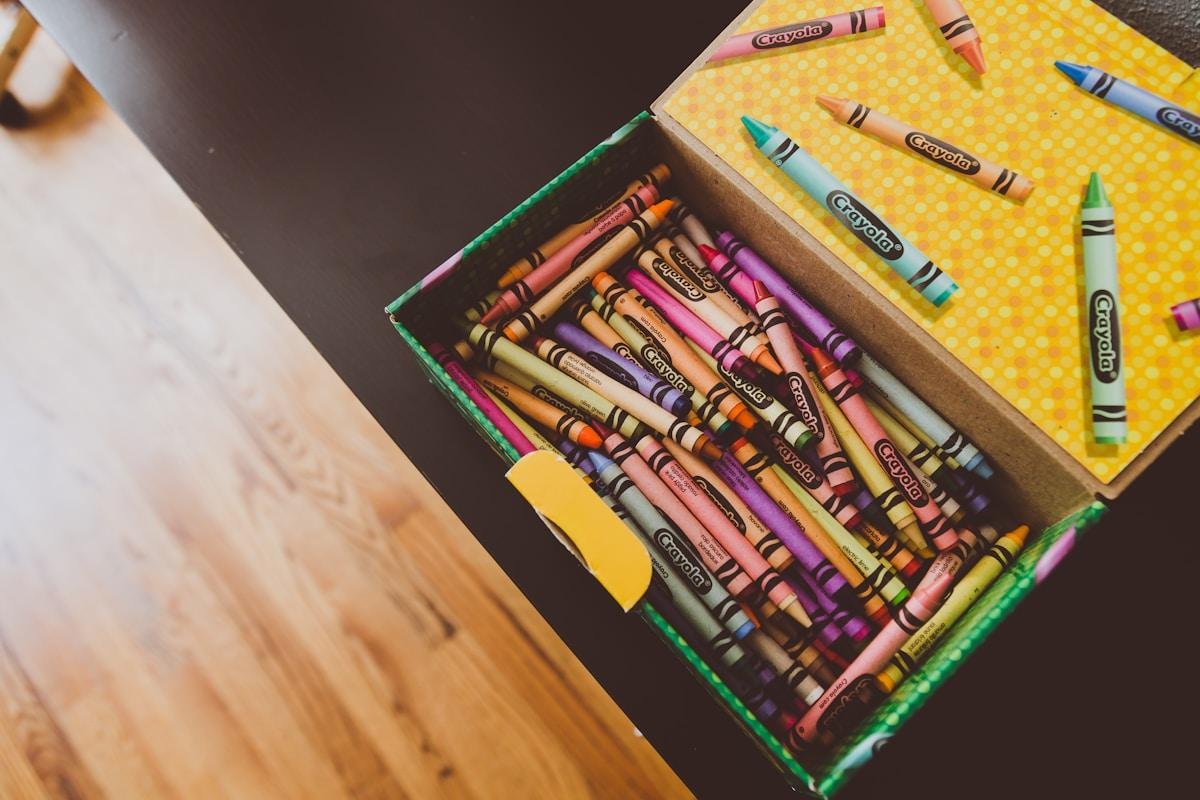Colors and Numbers aren’t Just for Kids
Not to be the bearer of bad news, but summer is soon coming to an end. The back-to-school sales are in full swing and the buses are out testing their routes. As much fun as summer is, I always loved the back-to-school season, especially shopping for all the supplies. Markers, pencils, erasers, notebooks – all of it. I’m still kind of addicted to stationery products if I’m being honest. This got me thinking about one of the most basic, yet exciting, items on the list. (Even if you don’t have kids in school, stick with me. I promise I have a point.)
The new box of crayons. It’s like a fresh start. So much potential, so much to create! Who wasn’t happy to ditch the old box and start anew? If you were like most kids, your old box was a mix of stubby colors that you used all the time and other colors that were almost untouched. Year after year.
Case in point: When I was 4, I was coloring at preschool one day when a girl walked up to me, took one look at my paper and said, “Don’t only use rey-ed!” like it was a two-syllable word. I had to gently inform her that the color was, in fact, pink. I knew that because everything that was important to me up to that point was pink and I was certain I didn’t like red, so I never picked it up. Over the years, I expanded my color palette bit by bit, though pink was never far from the mix. When I look at that drawing now – I don’t know about you, but my mother saved all of my school art – I have to admit it’s kind of boring.
So what does this have to do with you? And what the hell does it have to do with nutrition?
Well, it occurred to me that the old box of crayons is sort of like many people’s relationship to fruits and veggies. There are the standards that show up on the table on a regular basis, and others that never make it into the shopping cart. When I ask many of my clients what vegetables they eat, the list generally goes something like this: broccoli, lettuce, carrots, tomatoes, white potatoes. Fruits usually include berries, apples, and bananas.
On some level, it’s easy to understand. You get into a rut, you’re in a hurry when you shop, or you just don’t have the time to think about changing things up right now.
What does your list look like? Chances are, it could use some improvement. Sometimes even I need to zhuzh things up a bit.
Why should you care? Don’t they say an apple a day keeps the doctor away? If only.
You’ve heard me say that it’s important to eat the rainbow every day – as many different colors of fruits and vegetables as you can. That’s because it’s the only way to ensure that you’re getting the full complement of vitamins and minerals that your body needs for optimal health. And, not only do you need the vitamins and minerals, but also the vitamins and minerals need each other.
Vitamins and minerals work synergistically, meaning many of them need to combine with others to do their jobs. The iron in spinach needs vitamin C in order for your body to absorb it. Spinach salad with strawberries or orange segments, check! Magnesium (found in dark green leafy veggies, avocado, banana, and nuts and seeds) is a catalyst in 300 enzymatic reactions in the body. But magnesium needs B6 (found in potatoes, starchy veggies, and non-citrus fruits) to boost absorption so your body can use it. How about a stir fry with starchy vegetables and kale topped with avocado and seeds? Why confine yourself to a few stalks of broccoli or a plain green salad when these easy ideas are as close as your grocery store?
You get the idea. The more colors you eat, the more vitamins and minerals you get, the more energy you have, the healthier you’ll be.
So, in honor of back-to-school, I’d like to offer a challenge for the month of September. Spend some time with your colors and numbers. At the end of each day, count how many different colors of plant foods you ate. Aim to include something from every color of the rainbow. A little planning goes a long way in achieving a goal like this. Brainstorm a list of foods for each color so you’re not trying to do it on the fly in the produce aisle. Then, explore some recipes that incorporate them and you’ll be on your way.
This is a great activity to do with kids, too, because it gets them invested in what your family is eating. Consider letting them pick one or two colors they like next time you’re at the store. The more you get them on board with the planning and prep, the more likely they’ll be to try new things. Challenge them to count their own colors, too, and report back to you. You can even offer them fun (non-food) rewards for a job well done.
If you do these activities yourself or with your families, I’d love to hear how it goes. Drop me a note to tell me what went well and what was a challenge, and I’ll give you a fix or two!


